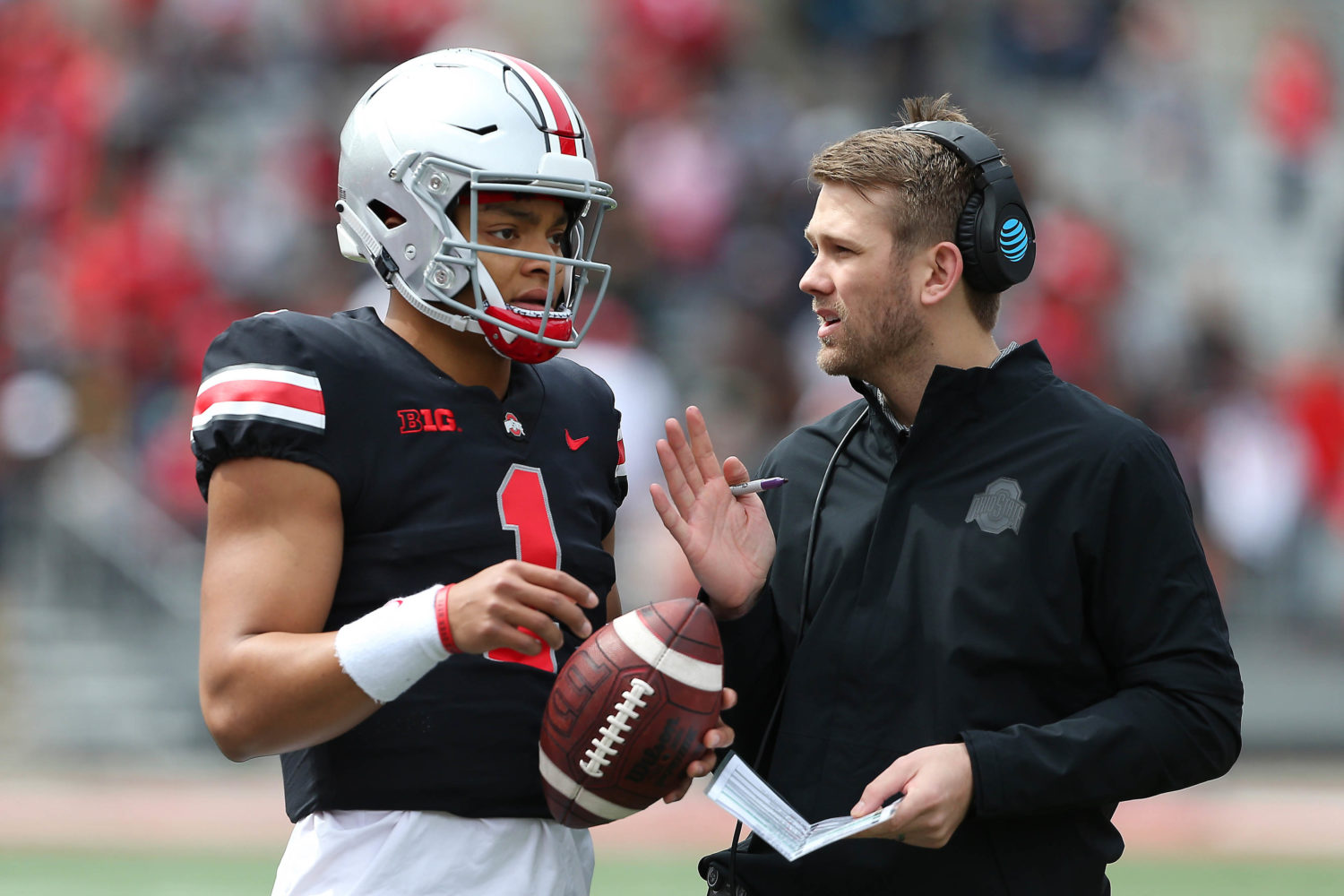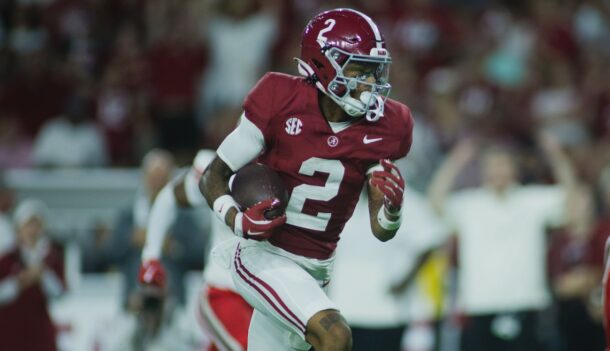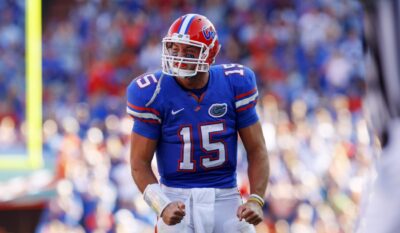
Good luck, history books: Breaking down some AP Top 25 streaks that’ll come to an end in 2020
The Associated Press Top 25 is a preseason staple of college football that ignites the masses in few ways that anything in this sport does.
Even in a year in which multiple Power 5 conferences are not playing, we will still indeed get mad about the AP Top 25. The poll is set to be released on Monday, Aug. 24, and it’ll be weird. After all, it’s 2020. Of course it’ll be weird.
Weird is that in the preseason poll, it will not matter which teams are playing and which teams already had their seasons canceled. That means Ohio State and Oregon will indeed show up in the preseason Top 25. Strange, yes. After games are played, of course, anyone without scheduled games will be removed from consideraton.
(Brace for the reality that the SEC has something like 10 ranked teams in early October.)
Is that just so teams like Ohio State can brag about being in the top 5 of the preseason poll for the 4th consecutive year? Probably. That stuff matters when it comes to selling a program, and for those fans who won’t get to see their team play this fall, it’ll provide a little “what might’ve been” for the 2020 season.
But Ohio State is one of those programs who will absolutely see its streak come to an end. Of course, they’ll have some sort of asterisk there. It’s certainly worth mentioning that the whole “we’re not allowed to play this year” thing sort of matters as it relates to these trends coming to a weird end in 2020 (all information via CollegePollArchive.com).
The buck stops here
Speaking of the Buckeyes, only Alabama has more consecutive weeks in the AP Top 25. The Buckeyes will presumably start in the AP Top 25 and extend their streak to 132 consecutive appearances until it ends after the season starts.
For a little perspective, Clemson, which is No. 3 in terms of active AP Top 25 streaks (85 weeks) would need another 3 seasons to reach that mark. The last time the Buckeyes didn’t rank in the AP Top 25 was that 2011 season when Tattoo-Gate resulted in the firing of Jim Tressel. In other words, this will be the first time Ohio State fails to show up in the AP Top 25 since Urban Meyer took over in Columbus.
That streak ranks No. 10 on the all-time list. It’s also the longest AP Top 25 streak in program history. That 2011 season ended Ohio State’s previous streak of 103 consecutive appearances from 2004-11.
(It’s crazy to think that even if you just combined those 2 streaks, Ohio State would still be 113 Top 25 appearances away from tying Nebraska’s all-time record of 348 consecutive weeks.)
Yes, I fully expect some sort of asterisk there that’ll allow Ohio State to continue that streak. With Ryan Day at the controls, the Buckeyes have a legitimate shot to continue that mark for another decade.
Poor Penn State
That sounded like sarcasm, but I do legitimately feel bad for Penn State fans. Had they been operating under normal circumstances, there was a path for the Lions to threaten Ohio State and make their first Playoff.
Go figure that Penn State’s active streak of Top 25 appearances dates to that wild 2016 game against Ohio State. It’s easy to forget that the Lions were once the unranked team, and this was a monumental upset:
Two years ago today, Marcus Allen and Grant Haley etched their names in @PennStateFball lore. pic.twitter.com/5sg4zOSrgn
— ESPN College Football (@ESPNCFB) October 22, 2018
We were correct to suggest that was a “program-altering win.” Since that game, Penn State earned 57 consecutive spots in the AP Top 25. That’s No. 5 among active streaks. Only Alabama, Ohio State, Clemson and Oklahoma rank higher on that list. That streak followed 4 years without a single AP Top 25 appearance in the wake of the Jerry Sandusky scandal.
Penn State’s current streak from 2016-19 ranks No. 63 on the all-time list.
How many multi-year streaks will end?
There are 11 teams that have an active AP Top 25 streak that dates to at least 2018. They are:
- Alabama (196 weeks)
- Ohio State (131)
- Clemson (85)
- Oklahoma (60)
- Penn State (57)
- Georgia (49)
- Notre Dame (45)
- LSU (38)
- Michigan (33)
- Florida (28)
- Iowa (18)
It’s not a coincidence that none of the teams with multi-year streaks are from the Pac-12. Oregon and Utah were ranked in all 17 AP Top 25 polls last year, but both those streaks began in the 2019 preseason AP Top 25.
Ohio State (131), Penn State (57), Michigan (33) and Iowa (18) have multi-year AP Top 25 streaks that will come to an end. Only Ohio State and Penn State have streaks that predate the 2018 preseason AP Top 25.
What will the new active streak leaderboard look like?
Once Ohio State, Penn State, Michigan, Iowa, Oregon and Utah are removed from the active leaderboard, there will inevitably be a shakeup. After that happens, here’s what I’d expect the new leaderboard to look like in terms of active AP Top 25 streaks (I added 1 to each of their current streaks because I’m assuming all of these teams will be ranked):
- Alabama (197)
- Clemson (86)
- Oklahoma (61)
- Georgia (50)
- Notre Dame (46)
- LSU (39)
- Florida (29)
- Auburn (18)
Yes, 5 of the top 8 active AP Top 25 streaks will belong to SEC teams. That’s coming to an SEC Network tweet near you.
In case you were wondering, Clemson’s streak actually dates to the 2014 Palmetto Bowl, which was the last one that Steve Spurrier coached in.
Why did I stop at 8 teams in that group, you ask? Well, once you take out the teams from the Big Ten, Pac-12 and Mountain West (Boise State), look at the teams behind that group (I noted the active number because I can’t assume all of these teams will start in the AP Top 25):
- Baylor (11)
- Cincinnati (11)
- Memphis (8)
- Appalachian State (5)
- Navy (4)
- Air Force (3)
- Texas (1)
- UCF (1)
It’s telling that Baylor (Baylor!), was the first team part of that next group. Meanwhile a total of 9 teams from canceled conferences with active AP Top 25 streaks will watch those come to an end. That’ll happen either in the preseason Top 25 or in Week 1.
In other words, yeah, the record books are going to be all over the place. And if you don’t think this stuff matters, you’ve never had the pleasure of reading through a college football media guide. For the elite programs, this is easy material to brag about.
This is going to be a particularly weird year for the AP Top 25 from start to finish. With just 6 FBS conferences active, we’ll have more subjectivity than ever. We could have 1-2 teams still ranked in the top 10. We could have a team who’s winless heading into the first weekend of October who still is a consensus Top 25 team.
The story which outlined the AP’s atypical circumstances illustrated an interesting point about that:
The AP provides guidelines to voters that are both broad and brief, understanding the task is more art than science, especially early in a season. The first sentence of those guidelines: “Base your vote on performance, not reputation.”
For those 7 remaining teams with multi-year streaks, reputation will inevitably benefit them. And sure, performance will also play a part.
All of this AP Top 25 talk should serve as a reminder. Really, it applies to all things 2020.
Embrace the weird.
Connor O'Gara is the senior national columnist for Saturday Down South. He's a member of the Football Writers Association of America. After spending his entire life living in B1G country, he moved to the South in 2015.







